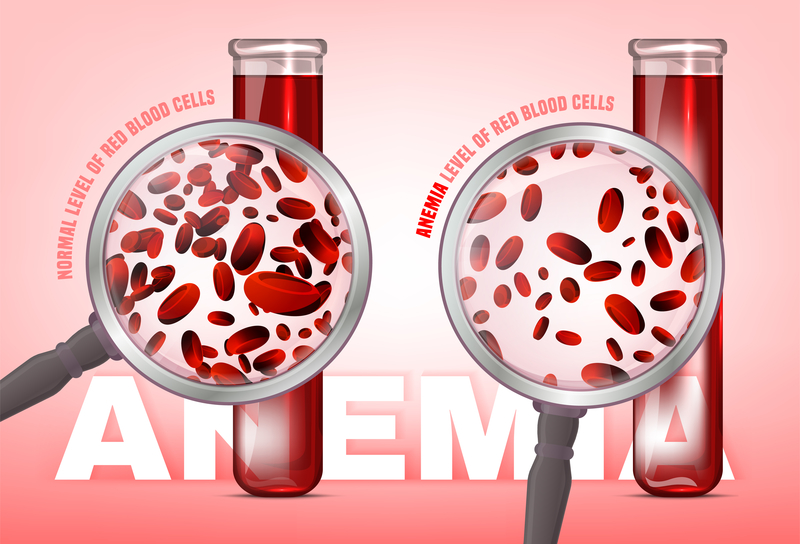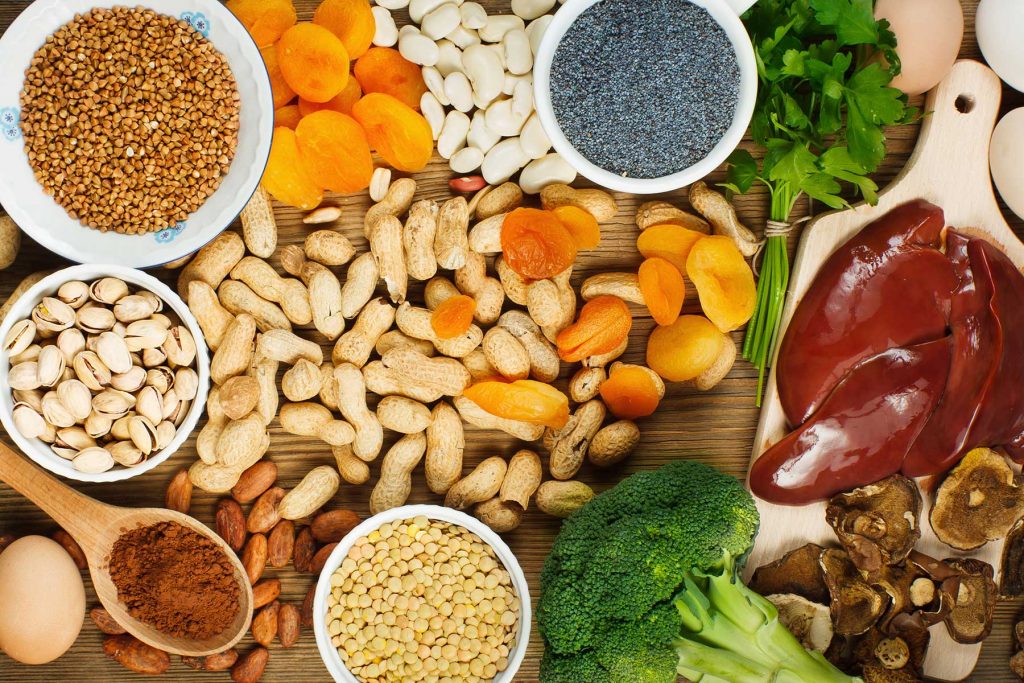Anaemia is a condition in which the number of red blood cells or their oxygen carrying capacity is insufficient to meet physiological needs, which vary by age, altitude, gender, pregnancy status and smoking status. Severe Anaemia is associated with fatigue, weakness, dizziness and drowsiness. Pregnant women and children are particularly vulnerable to Anaemia.
Did you know that according to the global nutrition policy review the highest prevalence of anaemia is found among preschool-age children (47.4%), and the lowest prevalence is among men (12.7%). The population group in which the largest number of individuals is affected is non-pregnant women (468.4 million). The African Region has the highest rates of all the regions, with anaemia affecting two out of three preschool-age children (67.6%), and about every second pregnant (57.1%) and non-pregnant (47.5%) woman. (https://www.who.int/nutrition/publications/policies/global_nutrition_policyreview.pdf) Therefore it is the duty of you and I to know what we ought to do to get out of this slow chewing ‘cancer’ that often goes unnoticed but significantly impacts health.

What causes anaemia
The most common cause of Anaemia globally is iron deficiency, but other causes include deficiencies in folic acid, vitamin B12; chronic inflammation; parasitic infections; and inherited disorders.
Iron deficiency
Anaemia caused by iron deficiency or as normally put, iron deficiency anaemia is the most common type of anaemia, and it occurs when your body doesn’t have enough of the mineral iron. Your body needs iron to make hemoglobin which is a protein found in the red blood cells that carries oxygen in your body and gives blood its red colour. When there isn’t enough iron in your blood stream, the rest of your body can’t get the amount of oxygen it needs. Whilst the condition may be common, many people don’t know they have iron deficiency anaemia as it is possible to experience the symptoms for years without ever knowing the cause. For women of childbearing age, the most common cause of iron deficiency anaemia is a loss of iron in the blood due to heavy menstruation or pregnancy. A poor diet or certain intestinal diseases that affect how the body absorbs iron are also probable causes of iron deficiency anaemia.
Deficiencies in folic acid
Folic acid is probably most common around antenatal units and pregnant women. As soon as a woman is confirmed to be pregnant, she is immediately put on folic acid for the entire pregnancy. Folic acid is a B vitamin that helps your body make red blood cells which carry oxygen to all parts of the body. Low levels of folic acid cause megaloblastic anaemia which is a condition where red blood cells are larger than normal and on top of that they are fewer than normal. They are also oval-shaped, not round and sometimes these red blood cells don’t live as long as normal red blood cells. Given the fact that the cells are too large, they may not be able to exit the bone marrow (this is where red blood cells are made) to enter the bloodstream and deliver oxygen.
Deficiencies in Vitamin B12
Vitamin B12 is another mineral that the body uses to make red blood cells and just like deficiency in folic acid, a deficiency in vitamin B12 causes megaloblastic anaemia as described above.
Chronic inflammation/disease
One can have low levels of red blood cells as a result of autoimmune diseases (diseases in which the body’s immune system attacks joints and/or body organs) or other chronic illnesses. Chronic diseases are those that last longer than 3 months. This type of anaemia is sometimes referred to as anaemia of inflammation and research indicates that it is the second most common type of anemia, after anaemia caused by a deficiency of iron. (https://my.clevelandclinic.org/health/diseases/14477-anemia-of-chronic-disease) Chronic diseases may cause changes in red blood cells and these changes can cause red blood cells to die sooner and slow down their production. In this condition, the iron that is normally recycled from old red blood cells to help make new red blood cells is retained within a system of cells called macrophages thereby limiting the amount of iron available to help create new red blood cells.
Parasitic infections
Anaemia can also be as a result of parasites’ in ones body that are causing blood loss. The main parasites that cause blood loss in man and lead to direct iron-deficiency anemia are the common worm infections including hookworm infection, whipworm infection and schistosomiasis. When blood is lost, this reduces the number of red blood cells available to carry oxygen around the body hence anaemia
Inherited disorders
Here is where we have the genetic red blood disorders that cause anaemia. This type of anaemia is also known as hereditary anemia. The most common disorder in this category is sickle cell anaemia however we have other disorders including Thalassemia, Congenital pernicious anemia, Fanconi anemia, Hereditary spherocytosis and Thrombotic thrombocytopenic purpura. Many people think of anaemia as something that happens because of only external factors, like a poor diet, but for some people, it is something to do with their genetic make up. They inherit genes that, one way or another, cause problems with the blood. For example in sickle cell anaemia, the people have a gene that causes the blood protein hemoglobin to form abnormally. As a result, red blood cells are produced in a sickle shape causing painful episodes, cause swelling in the hands and feet and also a reduced ability to fight infection. For thalassemia, the body is unable to produce enough hemoglobin, which functions to carry oxygen throughout the body as a result of faulty genes; Fanconi anemia the person has an inherited blood disorder that interferes with the bone marrow’s ability to produce an adequate supply of new blood cells for the body e.t.c
Symptoms of anaemia
Anaemia signs and symptoms vary depending on the cause. For instance if the anaemia is caused by a chronic disease, the disease can mask them, so the anaemia might be detected by tests for another condition. So depending on the causes of the anaemia, you might have no symptoms or signs and symptoms that include:
- Fatigue
- Weakness
- Pale or yellowish skin
- Irregular heartbeats
- Shortness of breath
- Dizziness or lightheadedness
- Chest pain
- Cold hands and feet
- Headaches
How to overcome anaemia
Having understood the causes of anaemia, we can now comfortably suggest some of the solutions that one can apply to prevent or avoid a reoccurrence of anaemia depending on the cause of the anaemia.
Treatment of anaemia can take so many routes and often includes dietary changes and no it is nothing complex other than including foods rich in iron and other vitamins essential to hemoglobin and red blood cell production. It should also include foods that help your body absorb iron better. We have two types of iron in foods; heme iron and nonheme iron. Heme iron is found animal sources such as in meat, poultry, and seafood. Nonheme iron is found in plant foods and foods fortified with iron. The interesting thing is that our bodies are made in such a way that they can absorb both types, but it absorbs heme iron more easily.

Here are foods that you can add to your diet to get more iron and help fight iron deficiency anaemia
Leafy vegetables
Imagine such an inexpensive way to treating anaemia. Leafy greens, especially dark ones, are among the best sources of nonheme iron. They include: spinach, nakati, dodo (amaranths), broccoli, Sukuma wiki. Some vegetables like broccoli, beans, citrus fruits and whole grains are good sources of folate. Remember a diet low in folate will cause folate deficiency anemia as described above. Remember to always accompany it with Vitamin C as it helps your stomach absorb the iron in these plant sources. Eating leafy greens with foods that contain vitamin C such as oranges, red peppers, and strawberries will certainly increase iron absorption.
Meat and poultry
All meat and poultry as mentioned earlier are sources of heme iron. All you want to eat will increase your iron levels although red meats have higher levels than white meats. I have a secret for you, eating meat or poultry with nonheme iron foods, such as leafy greens, along with a vitamin C-rich fruit can increase iron absorption in a whole other level.
Liver
Organ meats are known to be the best sources of iron and liver that biggest of all of them. It is also a great source of vitamin A. The other iron-rich organ meats include the heart, kidney, and beef tongue.
Beans
Beans are such a great source of plant based iron which are inexpensive and versatile. Whatever kind of beans you can get will be a great source for example kidney beans, chickpeas, black-eyed peas, soybeans, pinto beans, black beans, peas e.t.c
Nuts and seeds
Don’t ignore nuts and seeds, they are a perfect sources of iron. They taste great on their own or sprinkled on salads or yogurt. Some of the nuts and seeds that contain iron include pumpkin seeds, sunflower seeds and groundnuts to mention but a few.
I will close this by telling you that you will not find anywhere in this world a single food to cure anaemia, however eating an overall healthy diet rich in dark, leafy greens, nuts and seeds, seafood, meat, beans, and vitamin C-rich fruits and vegetables will go a long way in managing anaemia.